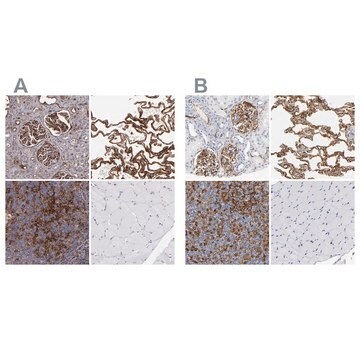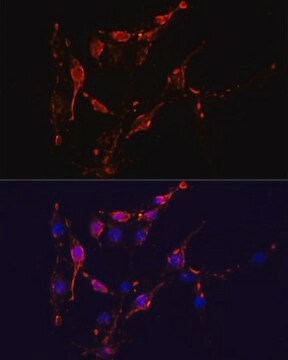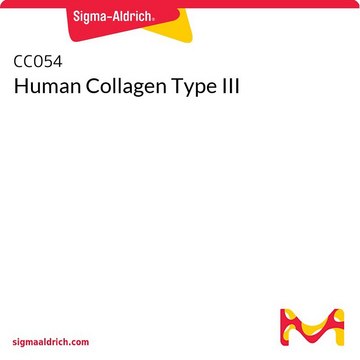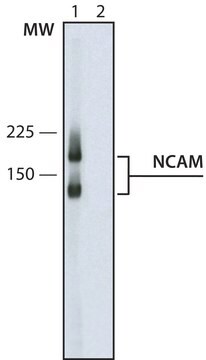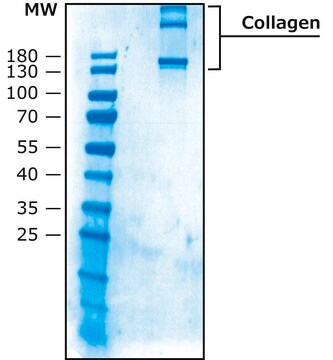C2969
Monoclonal Anti-I-CAM-1 (CD54) antibody produced in mouse
clone 8.4A6, purified immunoglobulin
Synonim(y):
Monoclonal Anti-CD54, Anti-I-CAM-1
About This Item
Polecane produkty
pochodzenie biologiczne
mouse
białko sprzężone
unconjugated
forma przeciwciała
purified immunoglobulin
rodzaj przeciwciała
primary antibodies
klon
8.4A6, monoclonal
masa cząsteczkowa
antigen 85-110 kDa
reaktywność gatunkowa
human, monkey
metody
flow cytometry: suitable
immunocytochemistry: suitable
immunohistochemistry (frozen sections): suitable
indirect ELISA: suitable
izotyp
IgG1
numer dostępu UniProt
Warunki transportu
wet ice
temp. przechowywania
−20°C
docelowa modyfikacja potranslacyjna
unmodified
informacje o genach
human ... ICAM1(3383)
Szukasz podobnych produktów? Odwiedź Przewodnik dotyczący porównywania produktów
Specyficzność
5th Workshop: code no. S 100
Immunogen
Opis wartości docelowych
Postać fizyczna
Uwaga dotycząca przygotowania
Oświadczenie o zrzeczeniu się odpowiedzialności
Nie możesz znaleźć właściwego produktu?
Wypróbuj nasz Narzędzie selektora produktów.
Kod klasy składowania
10 - Combustible liquids
Klasa zagrożenia wodnego (WGK)
WGK 3
Temperatura zapłonu (°F)
Not applicable
Temperatura zapłonu (°C)
Not applicable
Środki ochrony indywidualnej
Eyeshields, Gloves
Certyfikaty analizy (CoA)
Poszukaj Certyfikaty analizy (CoA), wpisując numer partii/serii produktów. Numery serii i partii można znaleźć na etykiecie produktu po słowach „seria” lub „partia”.
Masz już ten produkt?
Dokumenty związane z niedawno zakupionymi produktami zostały zamieszczone w Bibliotece dokumentów.
Nasz zespół naukowców ma doświadczenie we wszystkich obszarach badań, w tym w naukach przyrodniczych, materiałoznawstwie, syntezie chemicznej, chromatografii, analityce i wielu innych dziedzinach.
Skontaktuj się z zespołem ds. pomocy technicznej